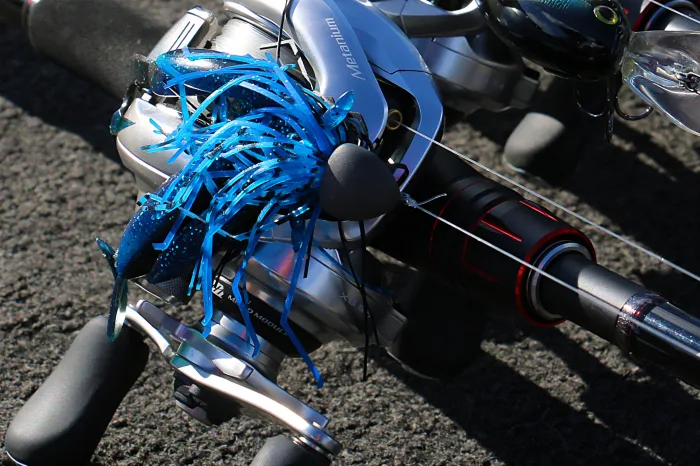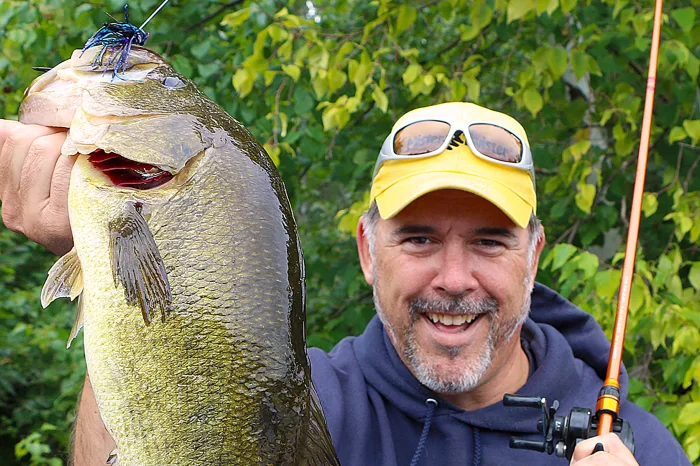While there are many styles of lures for anglers to choose from, selecting the appropriate color of baits can be the biggest factor in a successful bass fishing adventure.
1. Black and Blue As a Lure Color

As an exploration of my fishing photo archives unfolded, a noteworthy pattern emerged—why do numerous photographs of prized largemouth bass feature a black and blue jig? This color combination appears to be prevalent, particularly in the context of pitching jigs. While occasional variations like pumpkin or purple surface, black and blue consistently takes center stage. It prompts the question: why does this color, especially for pitching jigs, enjoy such favor among anglers? Is it truly the ultimate choice, and if so, why isn’t it equally popular across other bait types like crankbaits or spinnerbaits? Despite other baits offering a black and blue option, the jig seems to hold a distinctive status. Is there more to this color preference, or is it simply a matter of angler tradition?
Fishing with a black and blue jig The black and blue jig is a bass fishing classic. Kurt Mazurek
2. The Facts About Bass Color Vision
In pursuit of answers supported by scientific facts, reference was made to “Knowing Bass” by Keith A. Jones, Ph.D., a book that significantly influenced the understanding of bass behavior. Dr. Jones, with 33 years of leading biological research at Pure Fishing, conducted numerous scientific experiments on bass, dispelling myths and misconceptions. In the chapter on bass vision, a critical revelation surfaces: a bass’s eye is optimally designed for distinguishing colors in the medium-red to green part of the spectrum. As you move toward blue and purple, a bass’s color perception diminishes considerably.
If red and green are within a bass’s color range, why haven’t lures of these hues dominated bass tournaments? Another study outlined in the book addressed bass preferences for striking lures of various colors. Surprisingly, red turned out to be the least effective, while blue fell in the middle. The only color that consistently outperformed others was a two-toned silver and black version of the lure. While this suggests that bass favor silver and black, the simplicity of this explanation is misleading. If this color combination provided a consistent advantage, experienced anglers would have caught on by now. Yet, thousands of bass tournaments have not crowned black and silver as the undisputed winner.
Fishing with a black and blue jig There is no denying, big bass love black and blue jigs. Kurt Mazurek
3. How To Justify Your Lure Color Selection

The somewhat elusive answer lies in our limited understanding of how bass decide to strike a lure. While color is a fundamental aspect of human perception, it might not hold the same significance in a bass’s world.
Considering this, and to validate reliance on the black and blue jig, it is concluded that color might not be a top priority for bass in most scenarios. This might be unsettling for those who place great emphasis on lure color. However, if the best scientific data available indicates a mismatch between the colors visible to bass and those that trigger strikes, perhaps there is no need to overly stress about it in fishing decisions. Personal experiences, although anecdotal, confirm the efficacy of the black and blue jig. So, despite the usual logical approach, this aspect of bass fishing can abide by the age-old adage: “If it ain’t broke, don’t fix it.”
Image/Source: MensJournal





